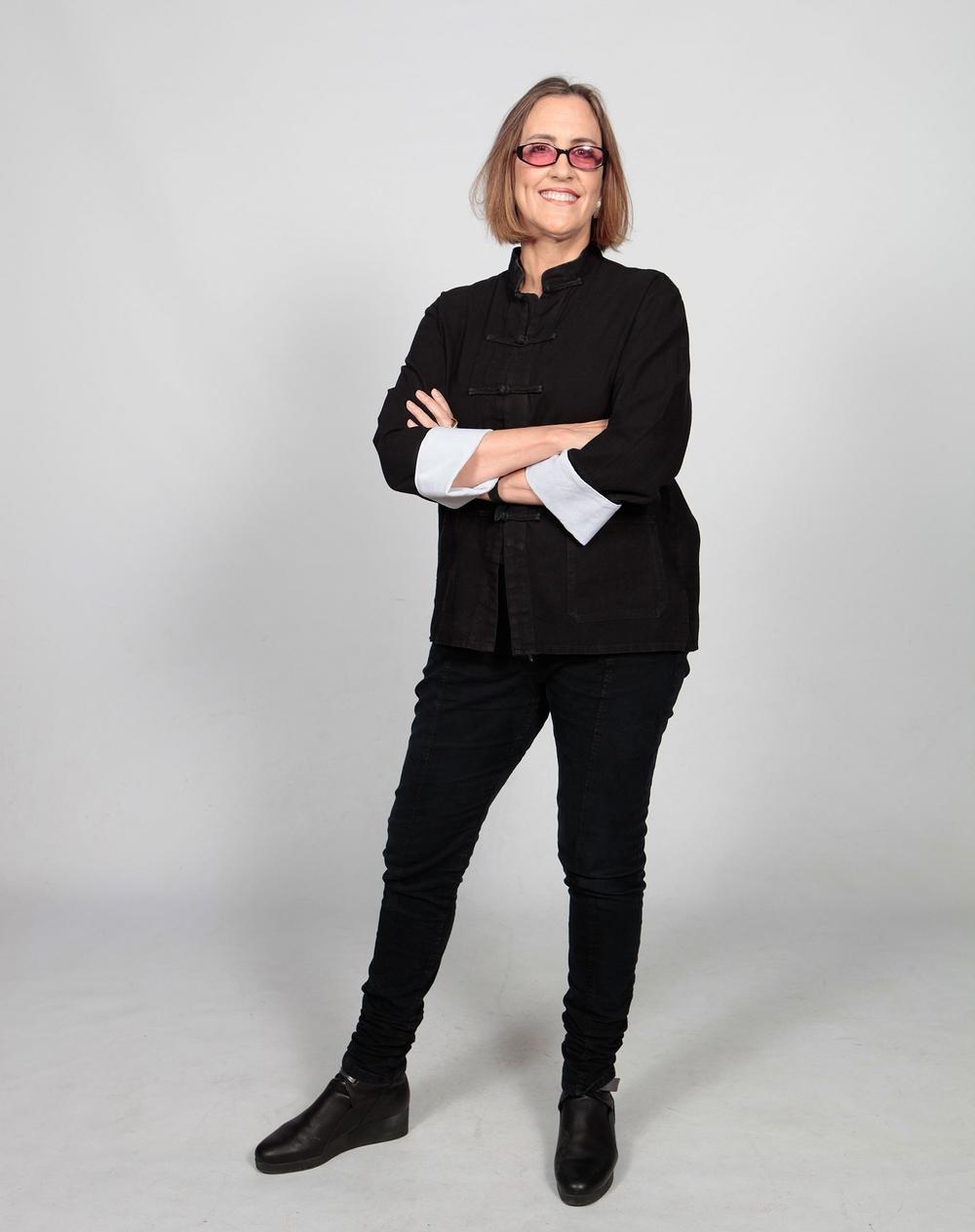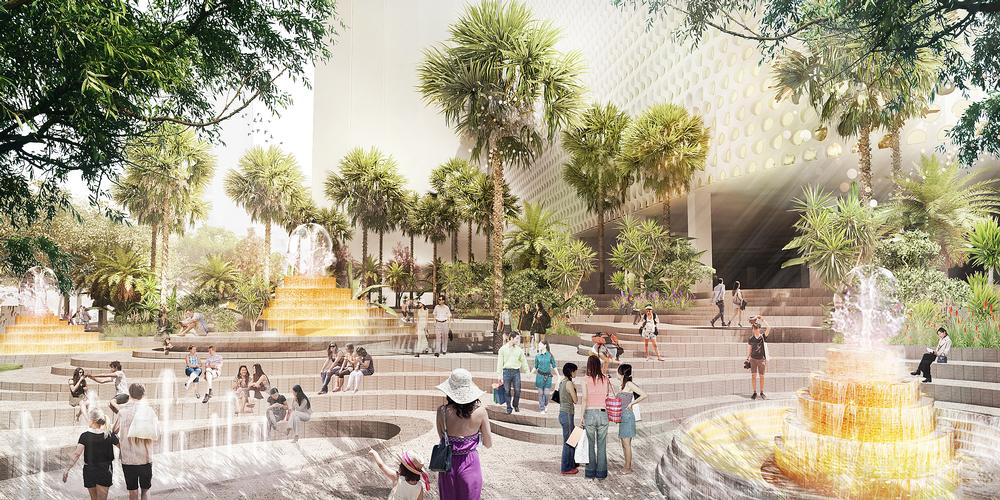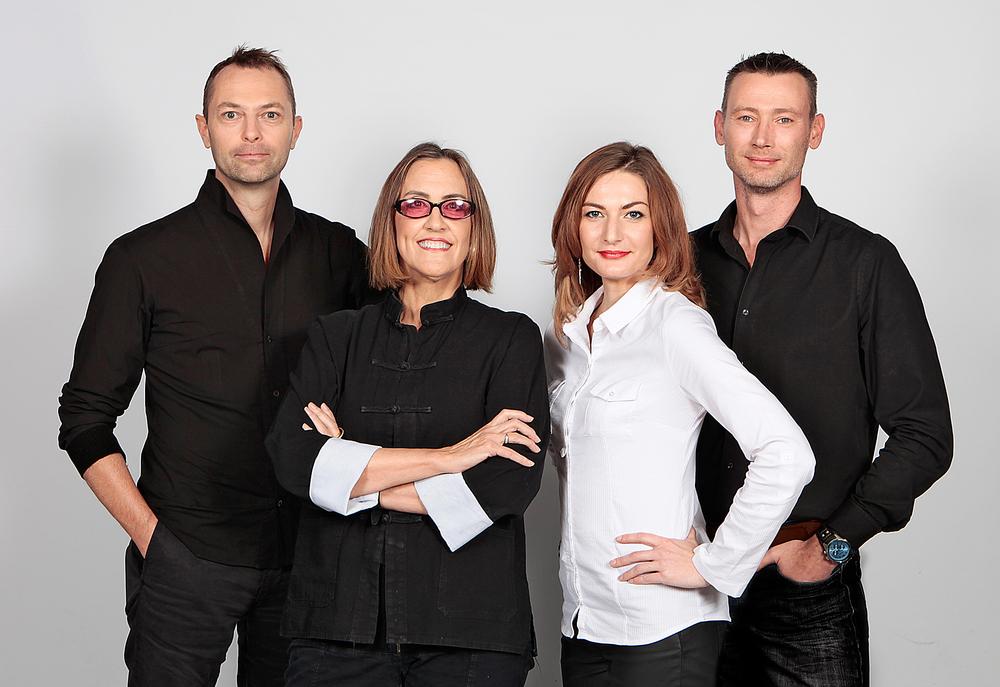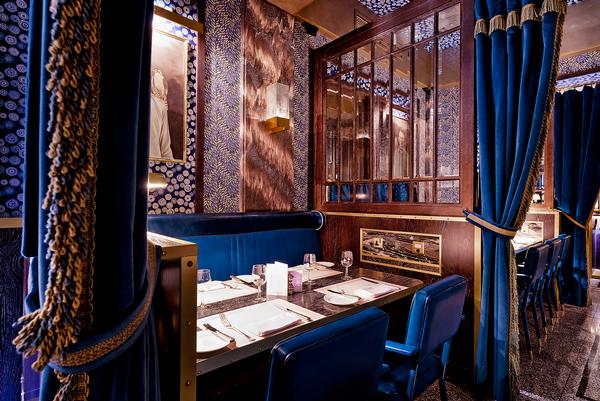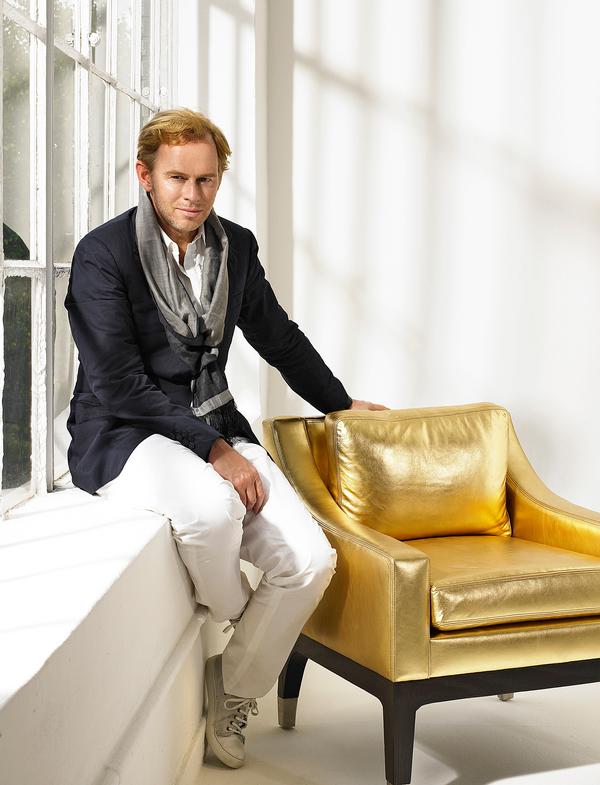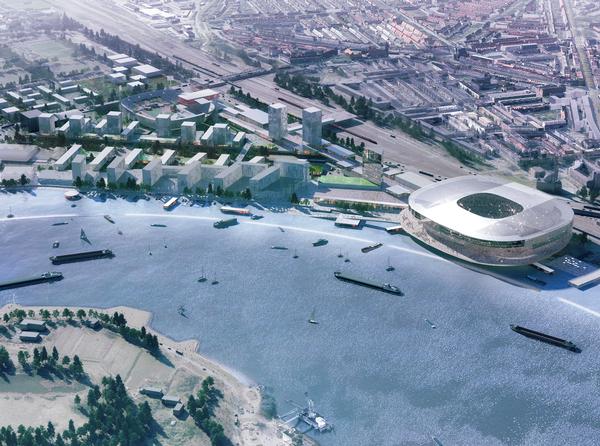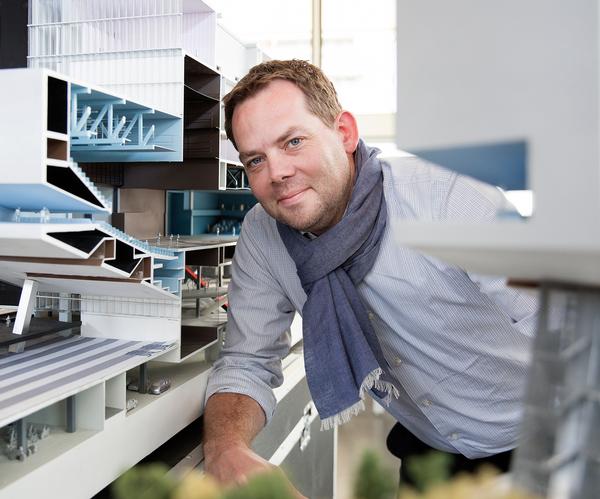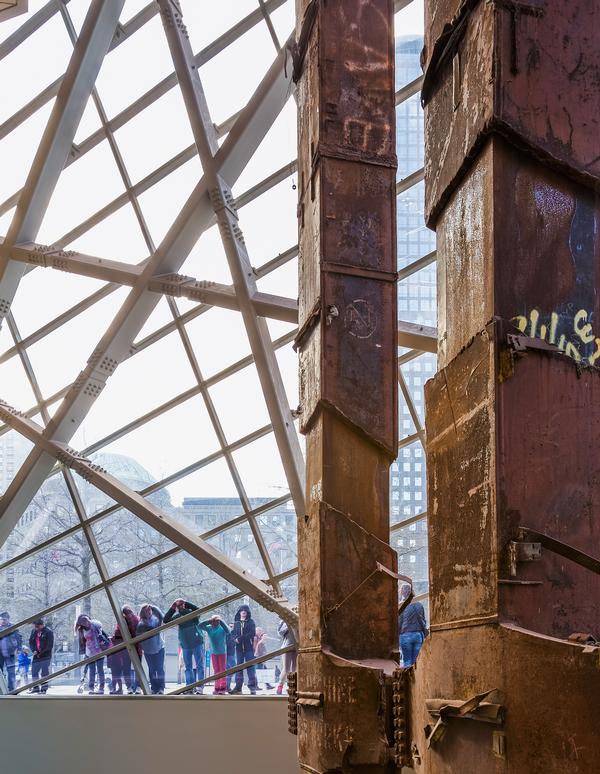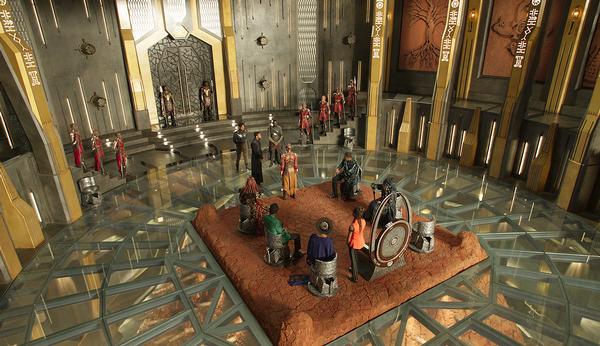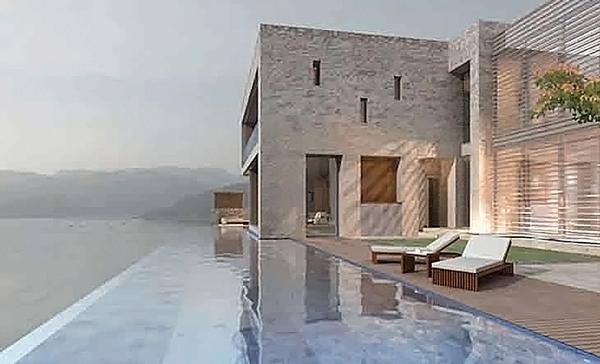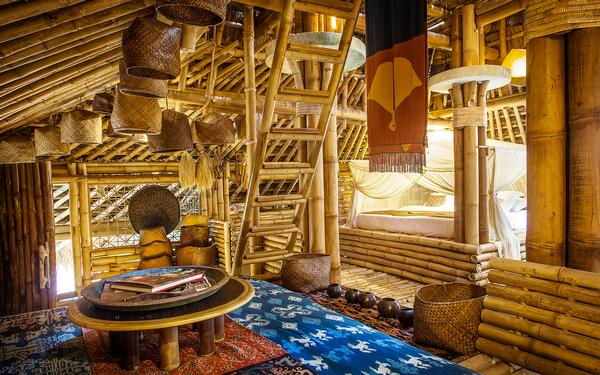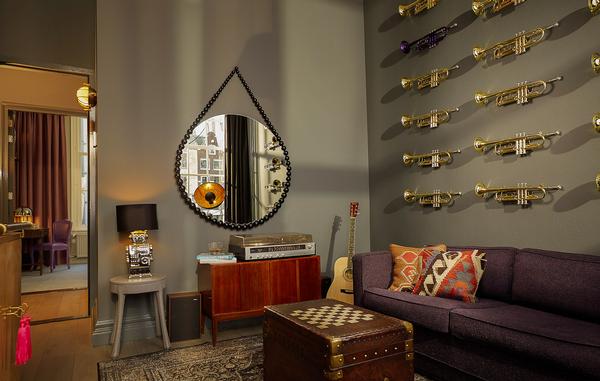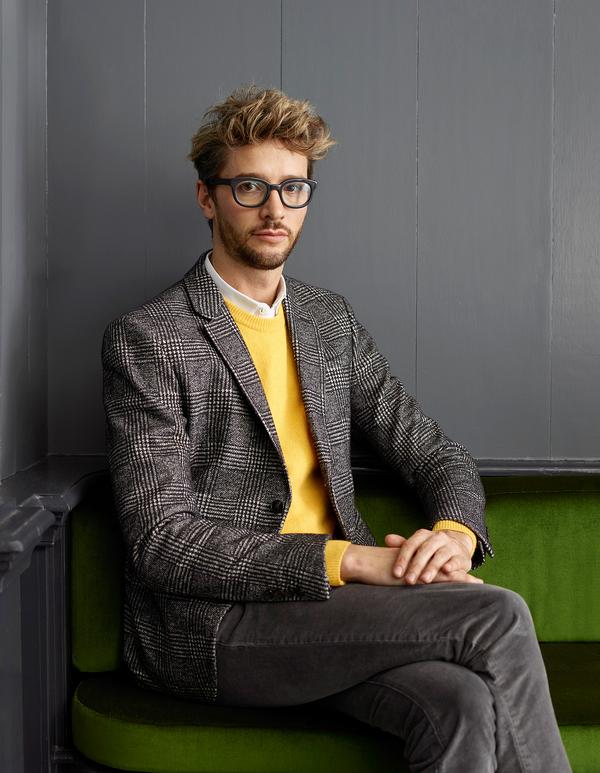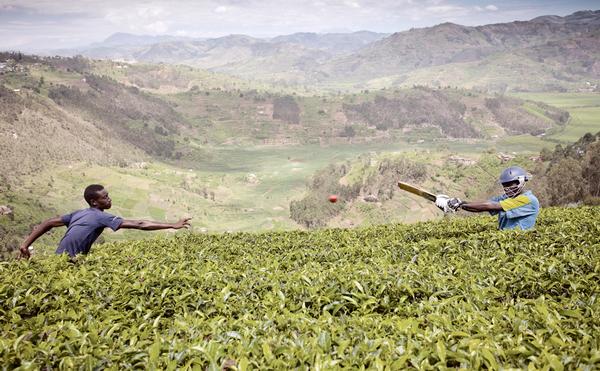Interview
Martha Schwartz
With her unusual and provocative work, Martha Schwartz brings a fine art approach to landscape design. She speaks to Kath Hudson about her career, climate change and how bagels led to her first big break
When did you decide you wanted to be a landscape architect?
I never intended to be a landscape architect! I wanted to make art in the landscape. I was very inspired, and enamoured, by the early earth works artists – giant art out in the landscape which belonged there and wasn’t a commodity to sell. I had a background in fine art, printmaking and ceramics, but my works were getting bigger and I was interested in scale.
During the 1970s, there were no classes in earth works art, it was a new idea, so I felt landscape architecture was the best route to doing that type of work. I applied for landscape architecture with my own agenda and without really knowing what it was. I wanted to learn how to shape land and build art within it, but the course didn’t really cover it. I was disappointed and considered giving up.
My works were too big for the art world, but landscape architecture was still influenced by the British way and naturalism. I wanted to take a different approach.
How do you describe your style?
I always aim to have fun with a project and hope that comes across. I like taking a risk and would like to think that what we do is memorable and leaves an impression.
What was your break?
My front garden. It’s the best thing I have done in my whole career. We had a Georgian town house with a 20ft by 20ft garden out the front and myself and my husband, who is also a landscape architect, couldn’t decide what to do with it. When he went on a business trip, I challenged myself to do it while he was gone, for less than $100, using only stuff I could buy in the local neighbourhood, which had a deli, an aquarium and a garden shop.
I baked about eight dozen bagels and waterproofed them, arranged them in a formal way, trimmed the hedges and put down purple fish gravel. A friend, who was a photographer, took some shots and we sent them to the ASLA magazine and they put it on the front cover!
They asked me to write an article on why bagels are good for gardens and I made a case, saying they’re very democratic, you don’t have to water them, they can be in the shade, they’re biodegradable. This was in the early 1980s; landscape architecture was made up of boring, white males and the reaction was tectonic. There was hate mail, people stopped their subscriptions to the magazine, the editor was sacked! But also some people thought it was fantastic and interesting.
What I was trying to say was that landscape is an art form, and should be part of a contemporary discourse. It doesn’t have to be part of nature. It can by funny, cynical, ugly, emotional. There is picturesque faux nature everywhere, but we don’t have to do that.
My garden went viral and I got loads of attention. Since then I have shaped the trajectory of my own work and became well known for being controversial and divisive. I don’t care what I’m called, I just want to do landscapes and site-specific art, related to a narrative, which could only be about that one place. I have always been choosy about work; it’s definitely not a get rich quick scheme.
What are your main influences?
I’m an idea junkie and get really excited when I see something which has never been done before. And I look at a lot of art. The bagel garden was very Dada and I like Pop Art for the fresh viewpoint. Minimalism is important to me too. It takes a massive effort to be minimalist: to pare away the clutter and everything which is not essential in order to create the maximum effect. I have always loved geometrics too: they’re not about naturalism, they’re made up by people.
Is there a process you go through when approaching projects, or do you take a different approach each time?
Both. Different cultures have different aesthetics, so it’s best to be flexible when approaching design, and landscapes vary so much, so there is always an issue and the design needs to take this into account. I have lots of people in my office who are very good at modelling on the computer, but I like to sit there with clay, or pencil and paper. Dreaming.
We have a very collaborative approach, where we brainstorm lots of ideas and hang sketches on the walls. We try to come up with a few ideas because clients, especially in China, like to have a choice.
Clients are generally full of problems, and find it difficult to decide, or articulate, what it is that they do want. We try to give them something they can fall in love with.
You are doing a lot of work in China, how do you find it working there?
I’ve been working in China for about 10 years and most of my current work is there. The travel is intense, but I’ve made my bed and now I’m sleeping in it!
However, the work is rewarding. China has a real hunger and appreciation for landscape architecture; they were the first real garden culture. Contemporary China is very much about education and learning and they are far more open to ideas about design and much more fun to work with than the first world. They want something special.
You teach about climate change at Harvard - what are your thoughts on the subject?
It is the single most serious issue which we are facing. Scientists say we’re past the point of no return, which means that we’ll never get back to as good as we were even last year. The Arctic is melting and methane is being released into the atmosphere, which is 30 times stronger than carbon dioxide.
It’s going to take us 30 to 50 years to get to zero carbon and by then it will be too late to save the planet. No one is taking the issue seriously enough and some bad things will have to happen before there is a change – there will be mass extinctions. The scientist community is working really hard to come up with solutions, but is not good at getting the message out.
We need to get more pro-active on this and come together, learn and teach others. It is starting to gain momentum. I’m on the board of the Landscape Architect Foundation and we are discussing how to get climate change on the curriculum. Even at Harvard it’s not part of the core curriculum.
I’m not pessimistic, because I’m not a pessimist, but I think we’ll have to go to mitigation, when we start to suck carbon dioxide out of the air and we’ll have to revert to geo-engineering. Future cities will have to adapt and mitigate.
You have worked on sustainable cities models and are a founding member of a Working Group for
Sustainable Cities, can you tell us more about this?
I’m currently working on a project, with the Illinois Institute of Technology, to reforest cities. When cars become automated there will be more space on the roads, so city streets could be repurposed as forests. This could cut back on energy use, as it would help to cool houses naturally, would soak up run off water and prevent flooding, as well as improving the environment. We are working on the metrics now, but I hope this could be a possibility one day.
Jeju Dream Tower Jeju Island, Korea
Martha Schwartz Partners are landscaping the 18,000sq m public plaza surrounding the new urban landmark, the Jeju Dream Tower, which is due to open next year. Inspired by the volcanic geology of Jeju Island, the design comprises elliptical “crater” formations into outdoor elements, such as stacked seatings, water features, planter boundaries and places to meet.
“These elliptical elements form an integrated, flexible design language, creating a plethora of unique opportunities, placed on the wavy stepped terraces, which transition the grade from the building edge to the sidewalk,” says Schwartz.
One elliptical, stacked sculptural feature gradually emerges out of the water pool and a series of staggered, elliptical slabs create a form on which water can play. A zig-zag language is used in the paving and the staggered vertical slabs, which become a fountain. Dark chocolate coloured lava stones are combined with tangerine orange, gold and yellow glass mosaic tiles throughout the design, to create an iconic image for the Dream Tower Casino and Jeju Island.
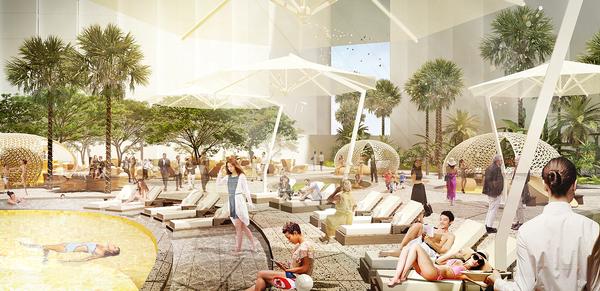
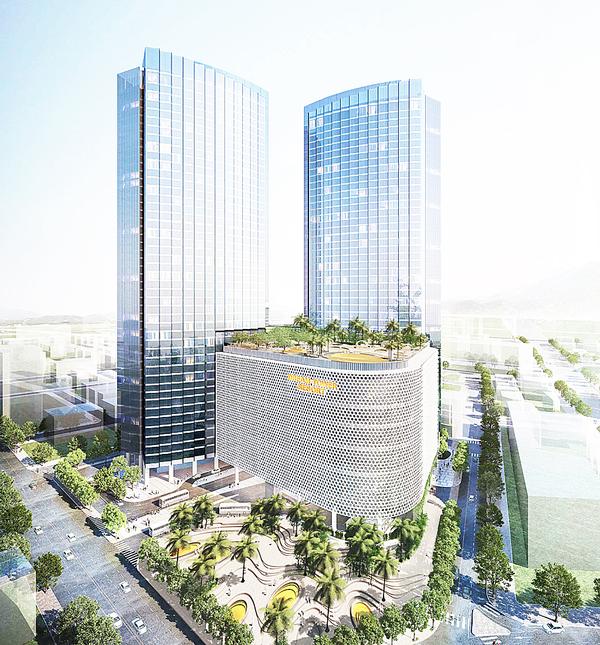
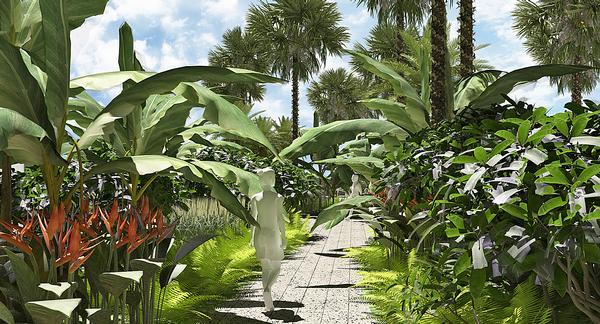
Vilnius Plaza
Lithuania
Martha Schwartz Partners are currently working on a mixed-use development in Lithuania’s capital city, Vilnius, which is fast becoming a progressive city for the new urban age, characterised by trends such as climate change, local need for community and connection to nature. Situated near Vilnius Cathedral and with views across the Nerris River to the Gediminas Castle Tower, the site has potential to become a cultural destination.
Inspired partly by the topography, a design narrative of a “surging landscape” has been created. “We see this as an extraordinary opportunity to re-energize the promenade and plaza through more contemporary programming and design, combined with innovative sustainability and urbanism strategies,” says Schwartz.
“We will make the site the ‘surging landscape’ of Vilnius’s open space system. We envisage the site as a place which will continue to evolve and adapt, without abandoning its rich landscape spectrums, where the site becomes a place that existing landscape elements are celebrated, and the future is promoted for the welfare of new generations.”

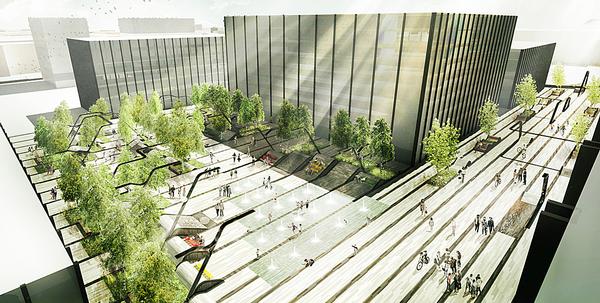
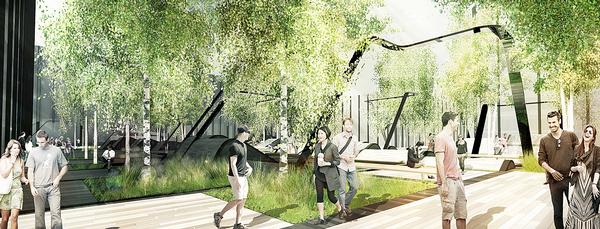
PAST PROJECTS
Mesa Arts and Entertainment Center
Arizona, USA
As well as providing a promenade through the site, the brief for this project was to provide places for both group gatherings and quiet relaxation. The team used long, curving lines of trees to create a Shadow Walk, which casts shadows and provides a cooling canopy.
A series of coloured glass structures complement the trees, casting coloured shadows and providing the structure for cooling mist jets to spray down to the walk way. Parallel to the Shadow Walk is a boulder-filled arroyo. Occasionally a strong pulse of water rushes through, which recalls the flash floods characteristic of the region, and provides a cooling effect.
A banquet table provides a further feature. The coloured glass forms used to catch light cast shade and colour shadows and take the form of sculptural and symbolic tables and chairs. “These forms are abstracted to create a poetic statement about people coming together in celebration,” says Schwartz.
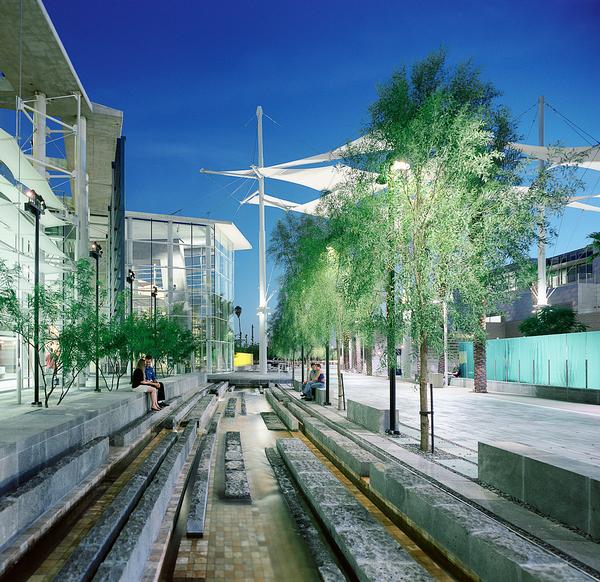
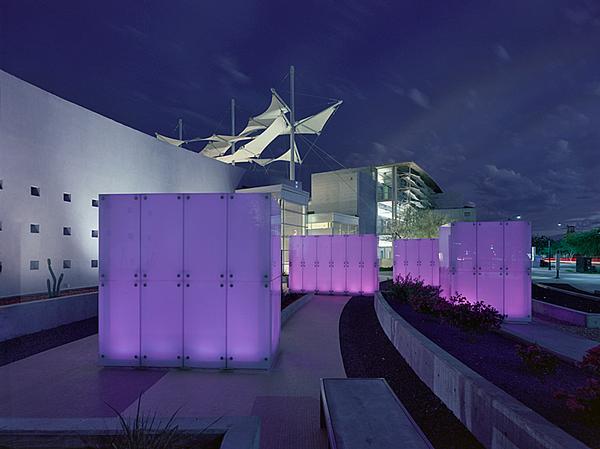
Reyjavik Art Museum Iceland
This huge black box installation (14m width, by 14m length and 5m high) is entitled I Hate Nature/ Aluminati and was installed in the museum courtyard in May 2008. It makes a statement about society’s delusional view that there are limitless natural resources to exploit in the modern world and specifically about Iceland’s economic dependence on aluminium, which involves a destructive smelting process.
Visitors walk into the box from a corridor inside the museum and are presented with a series of framed views onto a blinding space of crinkled, industrial aluminium which is both mesmorising and repulsive, attractive and dangerous.
“The disconnection between what we say and what we do about nature, along with our misconception of our place in nature, disallows us from developing a pro-active, form-giving attitude towards the built environment,” says Schwartz.
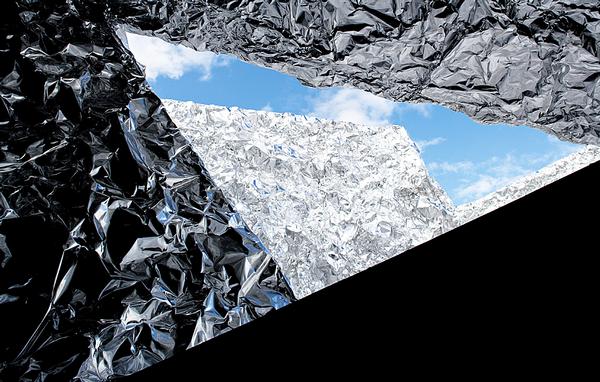
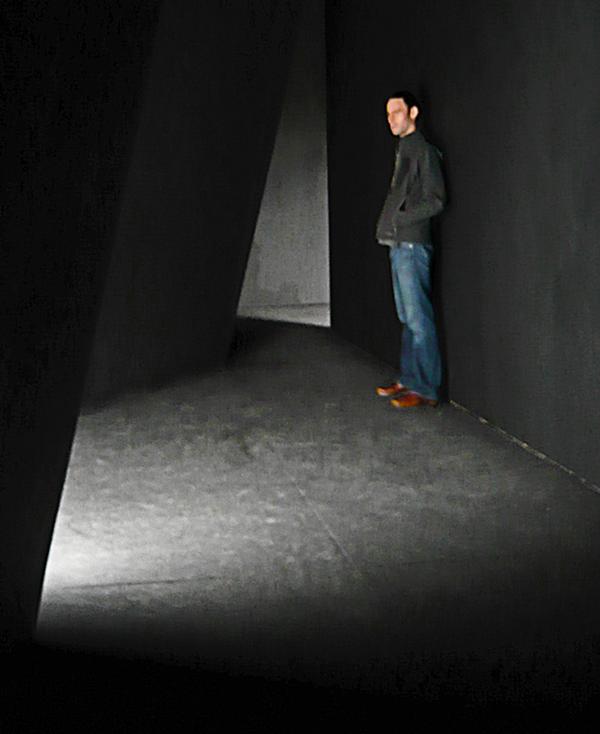
The Bagel Garden USA
Schwartz’s front garden shot her to fame in 1979. She arranged purple aquarium gravel and eight dozen weatherproofed bagels (her favourite food) between the 16 inch high boxwood hedges, while her husband was away.
“Despite the many garden party guests who were helping us celebrate the installation and my husband’s return, he was not particularly amused,” says Schwartz. The family left within a few days for a summer in Europe and the bagels eventually decomposed. Despite this, it did kickstart Schwartz’s career and was a project which reflected many hallmarks of her style.
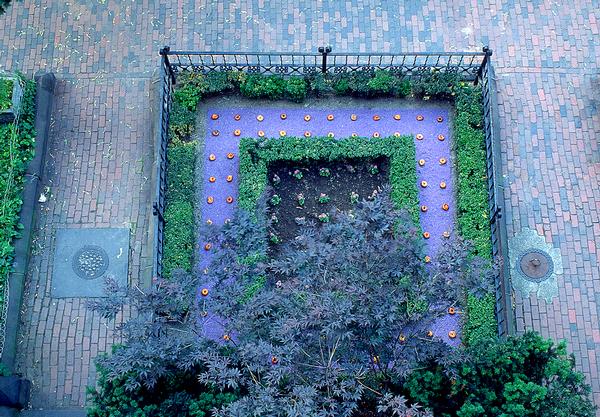
Xi’an International Horticultural Exposition Organising Committee USA
Martha Schwartz Partners was one of nine international landscape design firms invited to design a small master garden installation on the theme of the “harmonious co-existence of nature and the city” at the 2011 International Horticulture Exhibition in Xi’an. The brief was to consider the limitations of local building materials and methods. It also stipulated that the garden should be accessible to a Chinese point of view.
The installation is composed of four elements: traditional grey brick walls and paving, weeping willows, one-way mirrors and bronze bells. One enters the “city” through two ends of an open hallway created by a blank but mirrored wall facing a façade of five archways. These are overarched with weeping willow branches which are hung with more than 1,000 small tuned bronze bell wind chimes.
The walkways create a maze with courtyards in between. On exiting, people realise the mirrors they encountered are one way mirrors so they can observe others from the hidden dark corridor. “No one quite knows where they are going and what to expect. It creates an experience of fun, discovery and perhaps some anxiety,” says Schwartz.
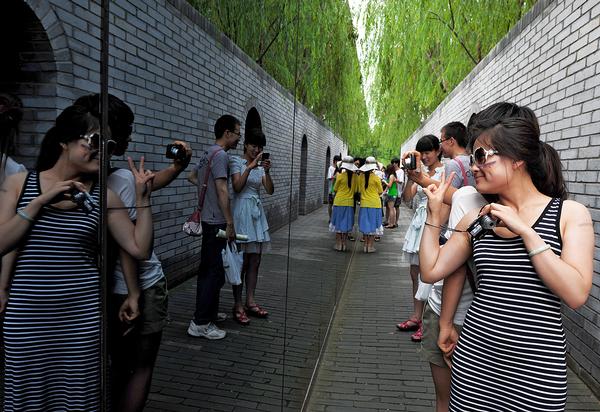
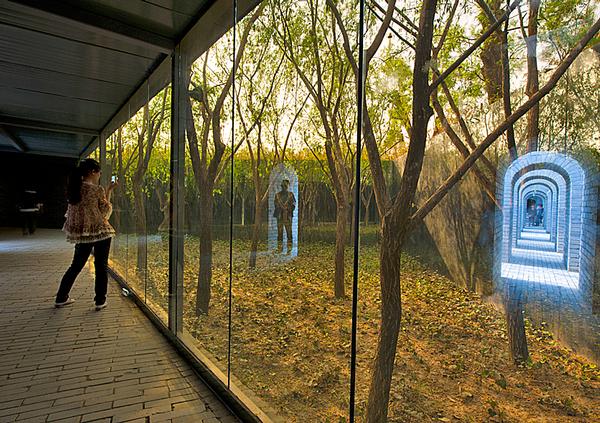
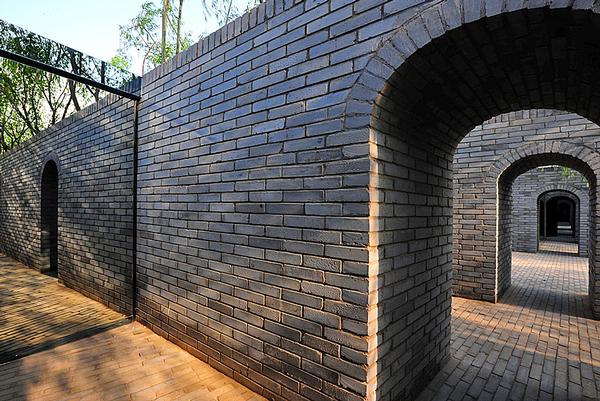
Creating the 9/11 Memorial Museum in New York involved meticulous planning. Its director Alice Greenwald tells us more



